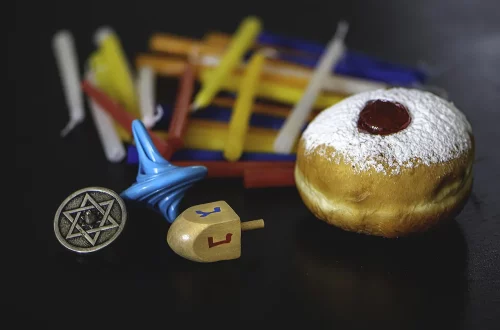
The Essential Guide to Choosing the Right Mustache Brush for You
Choosing the right mustache brush can feel like a daunting task, especially with the myriad of options available in today’s grooming market. A well-groomed mustache is not just a style statement; it reflects personal care and attention to detail. However, the brush you select can significantly influence the overall appearance and health of your mustache.
When it comes to grooming tools, brushes play a pivotal role in maintaining facial hair. They help untangle, style, and distribute natural oils, which are essential for keeping hair healthy and vibrant. A mustache brush can also enhance the natural texture of your facial hair, making it look fuller and more refined. The right choice ensures that your grooming routine is both effective and enjoyable.
But what should you consider when selecting a mustache brush? Factors such as material, bristle type, size, and personal grooming preferences all come into play. By understanding these elements, you can make a choice that not only meets your grooming needs but also elevates your overall look.
Understanding Brush Materials
The material of a mustache brush is crucial in determining its effectiveness and longevity. Brushes can be made from various materials, including wood, plastic, and metal, each offering distinct benefits.
Wooden brushes, for example, are often favored for their durability and aesthetic appeal. They provide a natural feel and are less static, which can help in reducing frizz. Additionally, wooden brushes are typically more eco-friendly compared to their plastic counterparts. Many wooden brushes feature boar bristles, which are excellent for distributing oils throughout the hair, keeping it moisturized and healthy.
Plastic brushes, on the other hand, are lightweight and often more affordable. They can be found in a variety of designs and colors, making them a popular choice for those who like to express their personality through grooming tools. However, plastic may generate more static and can sometimes cause hair to frizz, which might not be ideal for everyone.
Metal brushes are less common but can be effective for specific styling needs. They are durable and easy to clean, but they might not provide the same gentle touch that wooden or boar bristle brushes offer. It’s essential to consider your hair type when selecting a material to ensure that your brush complements your grooming routine rather than complicates it.
Ultimately, the choice of material should align with your personal preferences and grooming goals. Whether you prioritize sustainability, aesthetics, or functionality, understanding the advantages and disadvantages of each material can help you find the perfect mustache brush.
Bristle Types: What’s Best for You?
The type of bristles on a mustache brush plays a significant role in how well it performs. Generally, bristles can be classified into three main categories: synthetic, boar, and nylon.
Boar bristles are often considered the gold standard for mustache brushes. They are firm yet flexible, making them ideal for grooming and styling. Boar bristles help to evenly distribute natural oils from the skin, promoting healthy hair growth and shine. This type of bristle can also help to exfoliate the skin beneath the mustache, reducing itchiness and irritation.
Synthetic bristles, while less popular, have their advantages. They tend to be softer and more gentle on the skin, making them a great choice for those with sensitive skin. Additionally, synthetic bristles are often easier to clean and maintain. However, they may not provide the same level of oil distribution that boar bristles do.
Nylon bristles are another option, known for their stiffness and ability to detangle thick hair. They can be effective for those with coarser mustaches but may not offer the same level of gentleness as boar bristles. If you have a particularly unruly mustache, a nylon brush might be worth considering.
When choosing bristle types, think about your mustache’s texture and thickness. For finer hair, softer boar bristles or synthetic options may be more suitable, while those with thicker, coarser hair might benefit from the sturdiness of nylon bristles.
Size and Shape Considerations
The size and shape of your mustache brush can greatly influence your grooming experience. Brushes come in various sizes, and selecting one that fits your needs is essential for effective grooming.
A smaller brush may be easier to maneuver, especially for detailed styling or for reaching the edges of your mustache. This can be particularly helpful for those who prefer a more precise look. However, smaller brushes may require more time and effort to cover larger areas.
On the other hand, larger brushes can help you cover more ground quickly, making them ideal for those with fuller mustaches. They can also be beneficial for distributing products evenly across a larger surface area. The downside is that larger brushes may be less precise, potentially making it harder to achieve intricate styles.
The shape of the brush also matters. Round brushes are often used for styling and creating volume, while flat brushes can be better for smoothing and straightening. Your choice of shape should align with your grooming goals. If you want to add volume and style, a round brush may be the way to go. Conversely, if your primary goal is to maintain a neat, tidy appearance, a flat brush might be more suitable.
Ultimately, consider your grooming routine and how you like to style your mustache when selecting the size and shape of your brush. The right choice can make your grooming process more efficient and enjoyable.
Care and Maintenance of Your Mustache Brush
To ensure that your mustache brush remains effective and lasts for a long time, proper care and maintenance are essential. Regular cleaning will prevent the buildup of oils, hair products, and dirt, which can impair the brush’s performance.
Start by removing any hair that has accumulated in the bristles. You can use a comb or your fingers to gently pull out the hair strands. For a deeper clean, fill a bowl with warm water and add a few drops of mild soap. Dip the brush into the soapy water and gently swish it around. Avoid soaking the brush, especially if it’s made of wood, as excessive water exposure can cause damage.
After cleaning, rinse the brush thoroughly under running water to remove any soap residue. Shake off the excess water and place the brush bristle-side down on a clean towel to dry. Avoid placing it upright, as water can seep into the base of the bristles and cause deterioration over time.
Occasionally, you may want to condition the bristles, especially if you’re using a wooden brush. A few drops of oil can help maintain the integrity of the wood and keep the bristles in good condition.
By following these simple care tips, you can extend the life of your mustache brush, ensuring it remains a reliable tool in your grooming arsenal.
In conclusion, choosing the right mustache brush involves considering materials, bristle types, size, and maintenance. By taking the time to understand these factors, you can select a brush that meets your grooming needs and enhances your overall look. Remember, a well-groomed mustache is not just about style; it’s also about proper care and maintenance.
*This article is for informational purposes only and does not constitute medical advice. For any health-related issues, please consult a healthcare professional.*




